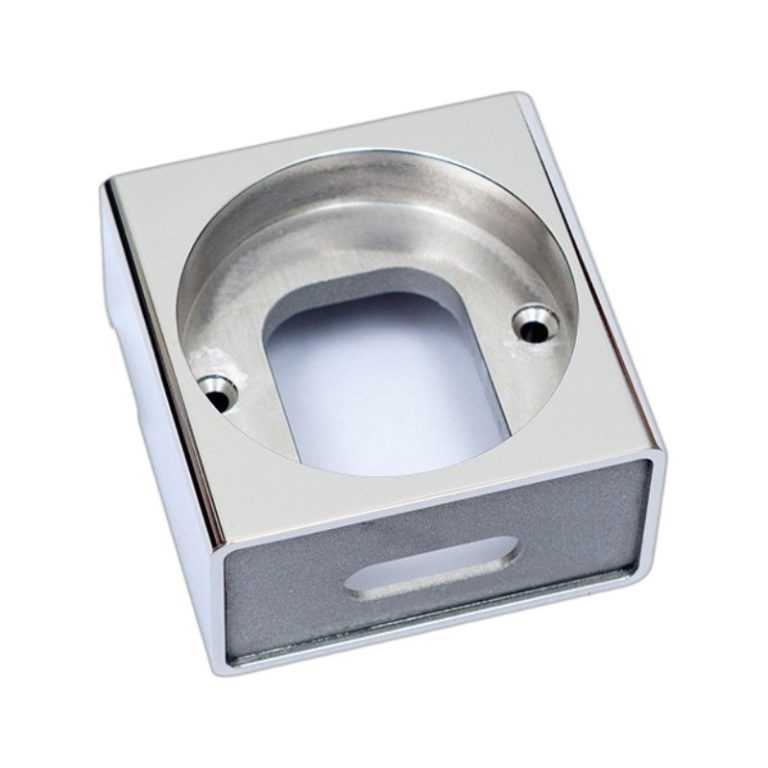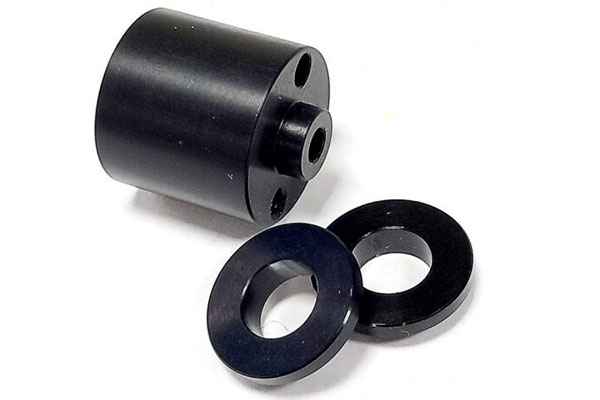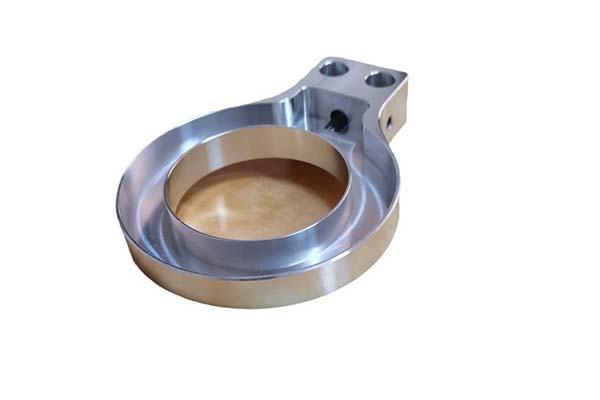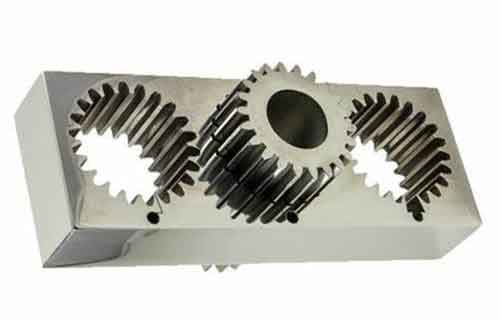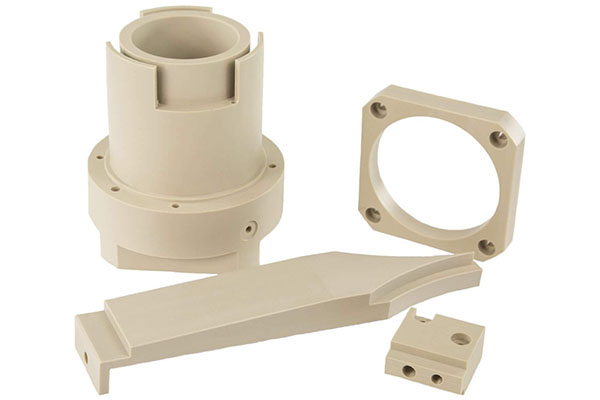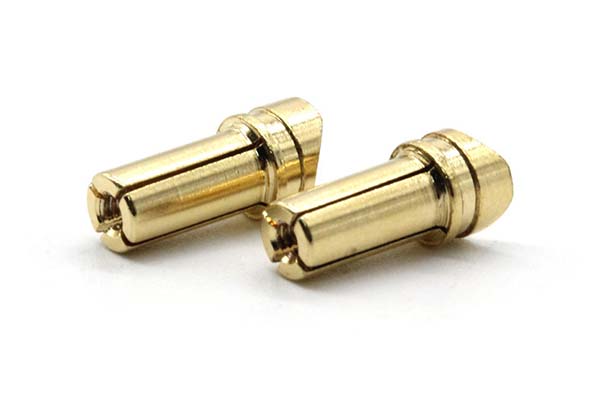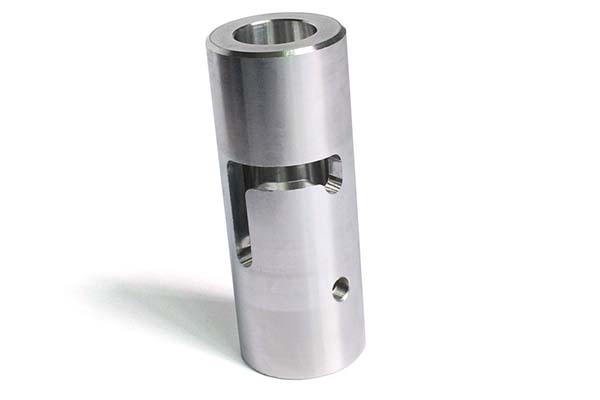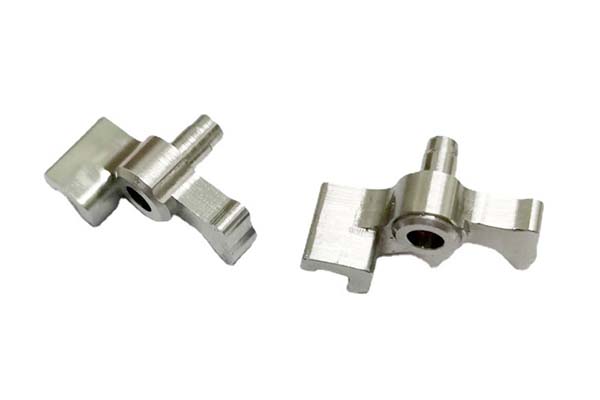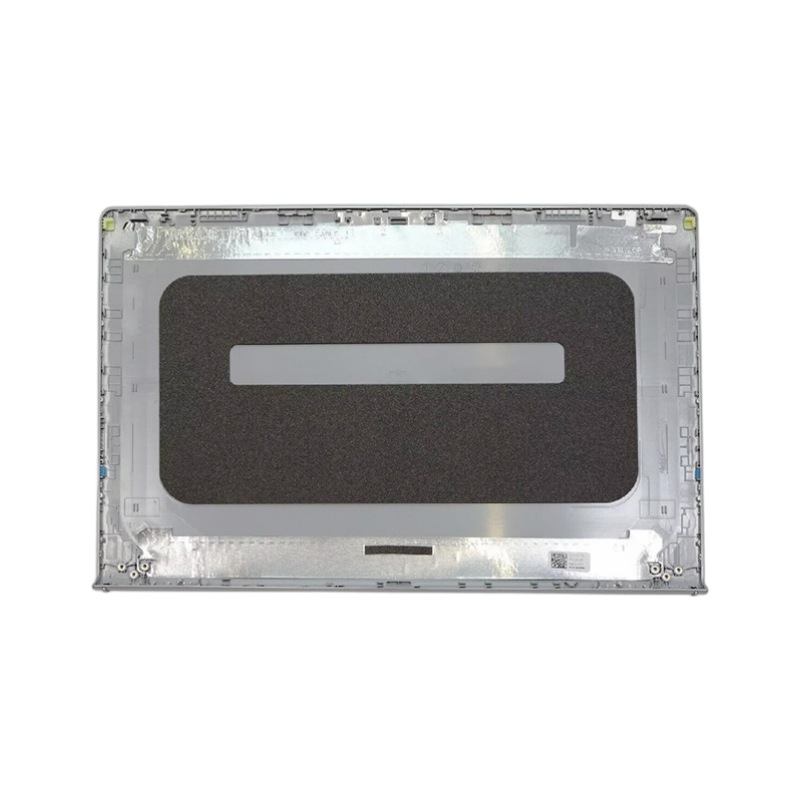Understanding CNC Turned Parts
CNC turned parts are components produced through the Computer Numerical Control (CNC) turning process. In this highly automated machining method, a rotating workpiece is precisely shaped by cutting tools according to pre-programmed computer instructions. This process allows for the creation of parts with complex geometries and tight tolerances, making CNC turned parts indispensable in numerous industries.
Industries Benefiting from CNC Turned Parts
- Aerospace: In the aerospace industry, where safety and performance are of utmost importance, CNC turned parts are used in engine components, landing gear systems, and aircraft structural parts. For Yigu Technology example, turbine blades, which are critical for aircraft engines, need to be manufactured with extreme precision. The high - temperature and high - stress environment in which they operate demand parts that are not only strong but also dimensionally accurate. A study by Boeing showed that the use of CNC - machined parts in their aircraft engines improved fuel efficiency by 3 - 5% due to the precise aerodynamic shapes that can be achieved through CNC turning.
- Automotive: The automotive industry relies heavily on CNC turned parts for engine blocks, crankshafts, and transmission components. A crankshaft, for instance, must be manufactured with a tolerance of within 0.001 inches in some high - performance engines. Precise CNC turning ensures that these parts can withstand the high - speed rotations and mechanical stresses within an engine. In fact, modern car manufacturers produce millions of CNC - turned engine components annually, with the precision of these parts directly contributing to better engine performance, reduced emissions, and increased fuel economy.
- Medical: In the medical field, CNC turned parts are used in surgical instruments, orthopedic implants, and diagnostic equipment. Hip implants, for Yigu Technology example, need to be a perfect fit for the patient's anatomy. CNC turning allows for the production of implants with precise surface finishes and geometries, reducing the risk of rejection and improving the long - term success of the implant. According to a report by the American Academy of Orthopaedic Surgeons, the use of precisely machined CNC - turned implants has reduced the rate of implant - related complications by up to 20% in the past decade.
The Significance of Precision in CNC Turned Parts
Precision is the cornerstone of CNC turned parts. Even the slightest deviation in dimensions can lead to significant performance issues. For example, in a hydraulic system, a poorly machined piston (a CNC turned part) can cause leaks, reducing the system's efficiency or even leading to complete failure. Tolerances in CNC turning can be as tight as ±0.0001 inches in high - precision applications. This level of accuracy ensures that parts fit together perfectly in an assembly, minimizing wear and tear and maximizing the lifespan of the final product. In the watchmaking industry, which is renowned for its precision, CNC turned parts are used to create tiny gears and components. The precision of these parts allows for the accurate timekeeping that luxury watches are known for, with some high - end watches having an accuracy of within a few seconds per month, all thanks to the precise manufacturing of CNC turned parts.
Precision in Different Manufacturing Processes
Turning Process
The turning process is a fundamental operation in machining, where a workpiece rotates while a cutting tool removes material to create the desired shape. There are two main types of turning: conventional turning and CNC turning, and the difference in their precision is quite significant.
In conventional turning, the operator manually controls the movement of the cutting tool. While it can produce parts with reasonable accuracy, the tolerance levels are relatively limited. For Yigu Technology example, in typical conventional turning operations, the achievable tolerance is around ±0.05mm. This means that the dimensions of the finished part can deviate by up to 0.05mm from the desired specifications. This level of precision is suitable for some low - tolerance applications, such as certain agricultural machinery parts where the requirements for tight tolerances are not as strict.
On the other hand, CNC turning offers a much higher level of precision. Thanks to the pre - programmed computer - controlled movements of the cutting tool, CNC turning can achieve tolerances as tight as ±0.01mm in many cases. This high - precision capability makes CNC turned parts ideal for industries where even the slightest deviation can cause significant problems. For instance, in the aerospace industry, components like engine shafts require extremely high precision. A deviation of more than ±0.01mm in the diameter of an engine shaft could lead to vibrations, reduced efficiency, and potentially catastrophic failures during flight.
The following Yigu Technology table summarizes the precision differences between conventional turning and CNC turning:
| Turning Type | Typical Tolerance | Applications |
| Conventional Turning | ±0.05mm | Low - tolerance applications such as some agricultural machinery parts |
| CNC Turning | ±0.01mm | High - precision applications in aerospace, medical, and high - end automotive industries |
Machining Operations
In addition to turning, other machining operations also play crucial roles in creating complex parts, and each operation has its own impact on precision.
Milling: Milling is a process where a rotating multi - tooth cutter removes material from the workpiece. It is commonly used for creating flat surfaces, slots, and complex 3D shapes. The precision of milling operations can vary depending on factors such as the type of milling machine, the quality of the cutter, and the machining parameters. In general, the tolerance for milling operations can range from ±0.02mm to ±0.05mm. For rough milling, which is mainly focused on removing large amounts of material quickly, the tolerance is usually around ±0.05mm. As the process moves towards finish milling, where the goal is to achieve the final desired dimensions, the tolerance can be reduced to ±0.02mm. For example, when milling the surface of a printed circuit board (PCB) for electronic components, a relatively tight tolerance of around ±0.03mm might be required to ensure proper fit and functionality of the components.
Drilling: Drilling is used to create holes in a workpiece. The accuracy of drilling depends on various factors, including the drill bit quality, the stability of the workpiece, and the drilling machine. The typical tolerance for a standard drilling operation is around ±0.1mm. This relatively large tolerance is due to the nature of the drilling process, which can cause some deviation in the hole's diameter and position. However, for more precise applications, techniques like gun drilling can be used to achieve a tolerance of around ±0.05mm. In the manufacturing of engine blocks in the automotive industry, holes for engine components need to be drilled with a high degree of accuracy. A deviation of more than ±0.1mm in the hole diameter can lead to problems such as oil leakage or improper fit of the engine components.
The Yigu Technology table below shows the precision ranges for different machining operations:
| Machining Operation | Typical Tolerance Range |
| Milling (Rough) | ±0.05mm |
| Milling (Finish) | ±0.02mm |
| Drilling (Standard) | ±0.1mm |
| Drilling (Gun Drilling) | ±0.05mm |
Case Studies: Real - World Examples of Precision Engineering
Case Study 1: Aerospace Component
A leading aerospace company approached us with a challenging task of manufacturing a critical engine component using CNC turned parts. The component needed to withstand high temperatures of up to 1200°C during engine operation and had to maintain its structural integrity under extreme mechanical stress.
Customer Requirements:
- The component had complex geometries with multiple curved surfaces and internal cavities.
- Tight tolerances were specified, with a diameter tolerance of ±0.005mm and a surface roughness requirement of Ra 0.2μm.
Manufacturing Challenges:
- Selecting the right material was crucial. We opted for a high - temperature - resistant nickel - based alloy, which is difficult to machine due to its high strength and work - hardening properties.
- Machining the complex internal cavities required specialized tooling and precise programming to ensure that the tool paths were accurate and efficient.
Achieved Precision:
Through a combination of advanced CNC machining techniques, high - quality cutting tools, and meticulous process control, we were able to meet the customer's requirements. The final product had a diameter accuracy of within ±0.003mm, well within the specified tolerance. The surface roughness achieved was Ra 0.15μm, surpassing the customer's expectations. This high level of precision not only ensured the component's performance in the harsh aerospace environment but also reduced the need for post - machining finishing operations, saving both time and cost for the customer.
Case Study 2: Medical Implant
A medical device manufacturer needed to produce custom - designed hip implants. The implants had to be an exact fit for each patient, based on their unique anatomical data.
Customer Requirements:
- The implants were required to have a biocompatible surface finish to minimize the risk of rejection.
- Geometric accuracy was of utmost importance, with a tolerance of ±0.01mm for critical dimensions such as the stem diameter and the acetabular cup curvature.
Manufacturing Challenges:
- Translating the patient - specific 3D anatomical data into accurate CNC machining programs was a complex task. It required the use of advanced CAD/CAM software and skilled engineers to ensure that the data was correctly interpreted.
- Machining the biocompatible titanium alloy, which is known for its low thermal conductivity and high chemical reactivity, presented challenges in terms of tool life and surface quality.
Achieved Precision:
We used a state - of - the - art 5 - axis CNC turning center to manufacture the implants. The combination of multi - axis machining capabilities and precise programming allowed us to achieve a stem diameter accuracy of ±0.008mm and a cup curvature accuracy within the specified ±0.01mm tolerance. The biocompatible surface finish was achieved through a combination of precision machining and a specialized post - machining treatment process. The successful production of these high - precision hip implants led to improved patient outcomes and reduced the need for revision surgeries, demonstrating the importance of precision in the medical device industry.
FAQs
What factors most affect the precision of CNC turned parts?
Several key factors impact the precision of CNC turned parts. The quality and condition of the CNC machine tools are crucial. High - end machines with advanced servo systems and precision ball screws can achieve better accuracy. For Yigu Technology example, a machine with a high - resolution encoder can detect and correct small positional errors, leading to more precise cuts. The choice of cutting tools also matters. Sharp, high - quality tools made from materials like carbide can maintain their edge longer, reducing tool wear and the resulting dimensional variations during machining. Additionally, the skill and experience of the operators play a significant role. Well - trained operators can optimize machining parameters such as spindle speed, feed rate, and depth of cut, ensuring consistent precision. Finally, the stability of the machining environment, including temperature and vibration control, can affect the precision of CNC turned parts. A temperature - controlled workshop can prevent thermal expansion and contraction of the workpiece and machine components, which could otherwise cause dimensional inaccuracies.
How can I ensure the quality of CNC turned parts?
To ensure the quality of CNC turned parts, start by choosing a reputable and experienced manufacturer. Look for companies with a proven track record in the industry, positive customer reviews, and relevant certifications such as ISO 9001. During the manufacturing process, establish clear communication with the manufacturer. Request regular updates on the production progress and ask for documentation of the quality control measures they are implementing. For example, ask for inspection reports at different stages of production, including in - process inspections and final inspections. Another important step is to conduct thorough testing. This can include dimensional inspections using precision measuring instruments like coordinate measuring machines (CMMs), surface roughness measurements, and material property tests. By actively participating in the manufacturing process and implementing strict quality control measures, you can increase the likelihood of receiving high - quality CNC turned parts.
Can CNC turned parts meet high - precision aerospace requirements?
Yes, CNC turned parts can meet high - precision aerospace requirements. As mentioned earlier, the aerospace industry demands parts with extreme precision and reliability. CNC turning technology has advanced to a level where it can achieve the tight tolerances and complex geometries required in aerospace applications. For instance, in the production of engine components, CNC turning allows for the creation of parts with tolerances as tight as ±0.001 inches or even less. The use of high - quality materials, advanced machining techniques, and strict quality control processes ensures that these parts can withstand the harsh operating conditions in aerospace, such as high temperatures, high pressures, and high - speed rotations. Additionally, aerospace manufacturers often work closely with CNC machining providers to develop customized solutions that meet their specific design and performance requirements, further guaranteeing that the CNC turned parts are suitable for aerospace applications.
